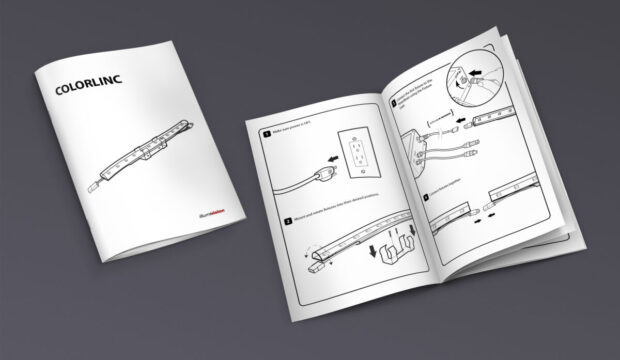User guide manuals are essential tools that accompany almost every product, from the simplest household item to the most complex industrial machinery. They serve as the bridge between the user and the product, offering instructions, safety information, and tips to enhance the user experience. A well-crafted user manual can significantly reduce customer frustration, increase product satisfaction, and reduce the number of support calls a company receives. In this article, we will explore the importance of user guide manuals, their components, and best practices for creating effective manuals.
The Importance of User Guide Manuals
User guide manuals are more than just booklets filled with technical jargon; they are a reflection of the company’s commitment to customer satisfaction. A clear and comprehensive manual can make the difference between a product being a success or a failure in the market. Manuals are particularly crucial for:
- Safety: They provide critical information on how to operate products safely, thus preventing accidents and misuse.
- Usability: They help users understand how to use the product effectively, ensuring they get the most out of their purchase.
- Troubleshooting: They offer solutions to common problems, saving users time and frustration.
- Customer Support: They reduce the workload on customer support by providing answers to frequently asked questions.

Components of a User Guide Manual
A user guide manual typically includes several key components:
- Cover Page: This includes the product name, model, and brand logo.
- Table of Contents: A clear index helps users quickly find the information they need.
- Introduction: This section introduces the product and outlines the purpose of the manual.
- Product Overview: A description of the product, its features, and its components.
- Setup Instructions: Detailed steps on how to assemble and start using the product.
- Operating Procedures: Guidance on how to use the product for its intended purpose.
- Maintenance: Tips and schedules for cleaning and maintaining the product.
- Troubleshooting: Common issues and their solutions.
- Warranty and Support: Information on the product’s warranty and how to contact customer support.
- Safety Information: Warnings and safety advice related to the product’s use.
Best Practices for Creating User Guide Manuals
Creating an effective user guide manual is an art that requires clarity, precision, and a deep understanding of the end-user’s needs. Here are some best practices:
- Know Your Audience: The manual should be written with the end-user in mind. Technical products require more detailed explanations, while everyday items may need simpler instructions.
- Use Clear Language: Avoid technical jargon unless it is necessary and commonly understood by the user. The language should be simple, direct, and easy to understand.
- Be Concise: Provide enough detail to guide the user but avoid unnecessary information that can overwhelm or confuse.
- Incorporate Visuals: Diagrams, photographs, and illustrations can help clarify complex instructions and provide a visual reference that words alone may not convey.
- Logical Structure: Organize the content in a logical flow. For instance, setup instructions should precede operating procedures.
- Index and Search Functionality: In digital manuals, search functionality allows users to quickly find what they need.
- Test the Manual: Before finalizing the manual, it should be tested by users who are unfamiliar with the product to ensure it is understandable and covers all necessary information.
- Accessibility: Manuals should be accessible, offering alternative formats for those with disabilities, such as audio descriptions or braille versions.

The Evolution of User Guide Manuals
With the advent of technology, user guide manuals have evolved from printed booklets to digital formats, including PDFs, online help centers, and even augmented reality (AR) applications. Digital manuals offer several advantages, such as being easily updatable, searchable, and more interactive. They can include videos, animated diagrams, and hyperlinks to additional resources. Some companies are now using AR to overlay instructions directly onto the product through a smartphone or tablet, providing a highly intuitive and interactive experience.
The Role of Localization in User Manuals
In our globalized world, products often reach an international audience, necessitating the localization of user guide manuals. Localization involves more than mere translation; it requires adapting the content to meet the cultural and legal standards of the target market. This means considering local regulations, measurement units, idioms, and cultural nuances that affect how the product is used and understood. For instance, safety instructions may vary significantly between countries due to different regulatory standards. Localization ensures that all users, regardless of their background, can effectively and safely use the product.

Environmental Considerations and Sustainability
The shift from physical to digital user guide manuals also reflects a growing awareness of environmental sustainability. Printed manuals consume paper and ink and require physical distribution, all of which have an environmental impact. Digital manuals, on the other hand, can be distributed instantly across the globe with minimal environmental footprint. Furthermore, they offer the flexibility of being updated easily, which means that any changes to the product or additional information can be communicated to the user without reprinting and redistributing new manuals. This not only conserves resources but also ensures that users always have access to the latest information.
The Future of User Guide Manuals
Looking ahead, the future of user guide manuals is likely to be shaped by advances in technology and changes in consumer behavior. The rise of smart devices and the Internet of Things (IoT) means that products are becoming more complex, and thus the need for clear and comprehensive guidance is more critical than ever. We may see the rise of interactive, adaptive manuals that can provide personalized instructions based on the user’s actions or preferences. Additionally, voice-activated assistants and chatbots could transform manuals into interactive conversations, providing a more engaging and responsive way to access information. As we move forward, the challenge for companies will be to balance the increasing complexity of their products with the simplicity and clarity that users need from a guide manual.

Conclusion
User guide manuals are a critical component of the customer experience. They empower users to safely and effectively use their products, while also serving as a first line of defense against operational errors and unnecessary customer service calls. By adhering to best practices in their creation, companies can ensure that their manuals are not just an afterthought, but a valuable resource that enhances the overall value of their product. As technology continues to advance, the future of user guide manuals looks to be more interactive, user-friendly, and integrated with the products they describe, making them an even more indispensable tool for consumers.
 Comeau Computing Tech Magazine 2024
Comeau Computing Tech Magazine 2024
